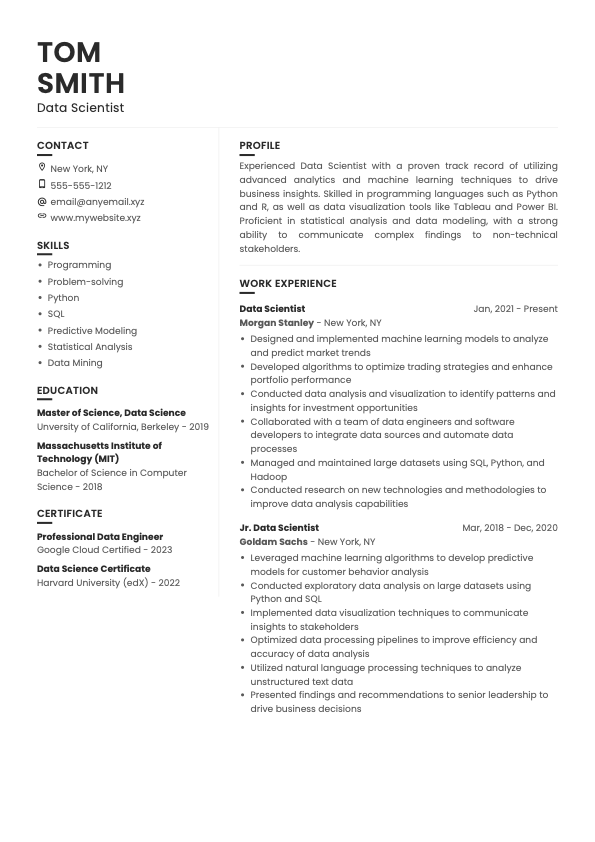
Data scientist is one of the most high-demand skills for the next 10 years. Here is what to include in your resume and how to highlight your skills and achievements to stand out to potential employers as a Data Scientist. You can also use the Data Scientist Resume Example below to start building your own resume.

"Detail-oriented Data Scientist with over 5 years of experience specializing in predictive modeling, data processing, and advanced analytics. Adept in transforming business challenges into actionable data-driven insights to drive growth and operational efficiency. Proven track record in delivering robust analyses leading to tangible improvements in customer satisfaction and revenue growth."
Tips for Writing a Strong Resume Summary
Keep it brief: Aim for 3-4 sentences, ideally between 50 – 100 words.
Focus on your most relevant experiences and achievements.
Incorporate keywords from the job description to align with the employer’s expectations.
- Developed predictive models that increased marketing ROI by 20% through targeted customer segmentation.
- Leveraged machine learning algorithms to enhance inventory management, reducing waste by 30%.
- Spearheaded a data integration project that improved data quality and accessibility, increasing team productivity by 40%.
Best Practices for Experience Section
Use reverse chronological order, starting with your most recent role.
Include company names, job titles, and dates of employment.
Emphasize accomplishments that align with the job responsibilities.
Technical Skills
Soft Skills
Tips for Skills Section
Use bullet points for clarity and readability.
Tailor your skills to match the job description.
Prioritize the most relevant skills for this role
Tips for Including Courses and Certifications
Creating a professional resume doesn’t have to be daunting. With the right guidance and tools, you can craft a resume that captures your strengths and impresses hiring managers. Use the Careerpilot resume builder and explore our suggested resume templates to get started. With our intuitive platform, you’ll have a polished and customized resume in no time. Start building your resume today and take the first step toward your next career opportunity!
We use cookies to enhance your experience. By continuing to visit this site, you agree to our use of cookies. Not consenting or withdrawing consent, may adversely affect certain features and functions.